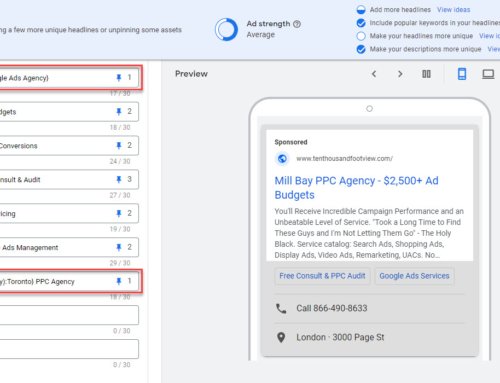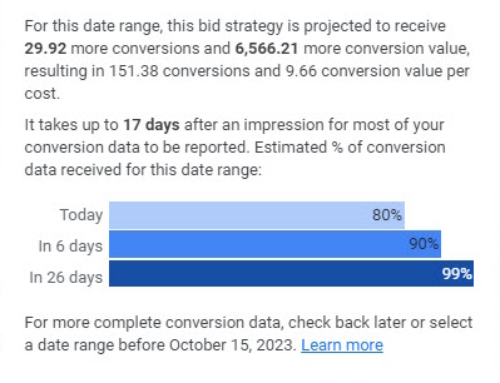Farewell Discovery Ads, we knew thee well!
Google is in the process of replacing Discovery Ads with Demand Gen campaigns. Indeed, Demand Gen campaigns have been in closed beta for a while and are starting to roll out broadly. This means you’ll no longer be able to create Discovery campaigns and your existing Discovery campaigns will be “upgraded” to Demand Gen automatically.
In this article, I’ll explain the main differences between Discovery and Lead Gen. But before I go into that I want to talk a little about the recent updates to Discovery Ads.
The Maturation of Discovery Ads
At Ten Thousand Foot View we’ve been using Discovery Ads extensively for remarketing, and with amazing results. But about 6-8 months ago, Google fundamentally changed the way targeting works inside of Discovery campaigns. Rather than directly targeting audiences as we do with display campaigns, targeting got revamped to use the audience signals model, the same as we use with P-Max. This is fine if your goal is to target general interest audiences, but prevents traditional remarketing.
As it stands, existing Discovery campaigns that target audiences directly (e.g. remarketing) still work. But you cannot, of course, build new Discovery remarketing campaigns.
With that aside, onto Demand Gen…
What Are Demand Gen Campaigns?
Demand Gen campaigns run ads on Google’s Gmail, Discovery Newsfeed, and YouTube platforms. While this is very similar to Discovery campaigns, the big innovation is offering advertisers the ability to include video ads in addition to display.
Another way to look at Demand Gen would be to take P-Max and remove display, search and shopping ad placements and allow you to target audiences directly.
What Ad Formats Are Available?
Image and Carousel Ads similar to Discovery formats are available in Demand Gen. In addition, you can add up to 5 videos that will run on in-stream and/or YouTube shorts placements. Lastly, you can also run dynamic product ads using Merchant Center feeds.
How Does Targeting Work?
Oddly, Demand Gen does not use audience signal targeting which was created for P-Max and then expanded to Discovery Ads. While you build named audiences the same way you do for P-Max, these are directly targeted as a group rather than only “informing” Google of what your audience looks like. This is fundamentally different as it allows precise targeting of groups and facilitates running true remarketing campaigns.
Demand Gen includes a few more wrinkles to make things both more interesting and confusing.
First, there is a new lookalike targeting feature. Where have I heard that before? Just like with Meta Ads, you can add existing segments such as a customer list, and then target similar (excuse me lookalike) audiences. You also need to choose a target country and select narrow (2.5%), balanced (5%), or broad (10%) targeting. Yes, this replaces Google’s similar audiences which were discontinued in August.
In addition, you can use “optimized” targeting which will expand targeting of the entire audience rather than one or more select segments. Maybe it’s just me but this seems redundant if we already have lookalikes, but I suppose it’s a simpler way to expand targeting more globally.
Overall, this new treatment is quite similar to the setup in Meta Ads. We’ll have to wait and see whether we’ll get “direct” targeting and lookalike features in Display, Video and/or P-Max.
How Does Bidding Work?
Bidding options include Max Conversions, Max Conversion Value, tCPA and tROAS. In addition, Google offers Max Clicks which makes sense for advertisers that will use this campaign type to drive brand awareness or influence decision-making rather than generate conversions.
Since Demand Gen will include new metrics for Brand and Search lift I would also like to see vCPM and views-based bidding, but alas it doesn’t look like we’re getting that. I guess because video and image ad impressions and views are different animals there’s no easy way to implement this.
Creative Split Testing
A new wrinkle Google included for Demand Gen is true split testing functionality. With the new Demand Gen experiments you can create multiple experiment “arms” to test a a bunch of campaign variations at once. It’s a great feature that we’re able to perform proper split tests here as we do with ad variations for RSAs.
Summary
Switching from Discovery to Demand Gen isn’t too difficult but quite a lot as changed. If you haven’t tried remarketing on Google’s premium inventory before I suggest you give Demand Gen a go. It can also be useful for advertisers that haven’t yet implemented P-Max and want to reach more inventory. Lastly, it’s a great option for larger budget advertisers that want more granular control and reporting on a per channel basis.







